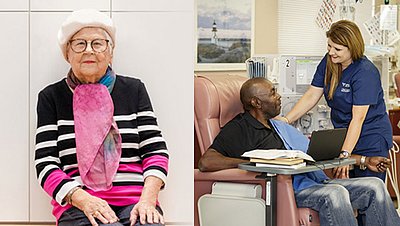Our patient stories and company features.
When Maria struck — One year after the hurricane
Loeper’s team faced two main challenges in the aftermath of the storm: On the one hand, they had to make sure the clinics were operational to provide life-sustaining dialysis treatments. On the other, this required running generators and replenishing water supplies. When Maria struck, there were a total of 6,000 dialysis patients living on Puerto Rico, 4,200 of whom were treated by Fresenius Medical Care. The authorities had to evacuate an additional 89 patients from St. Thomas, one of the U.S. Virgin Islands, to escape Hurricane Irma, adding to the workload at Los Paseos.
“Fresenius Medical Care truly excelled in its response to Maria,” Ramirez says, looking back. Based on the experience gained during Hurricane Maria, Fresenius Medical Care increased the number of personal generators on the island from around 100 to 370 units to supply power to the employees’ homes, and shipped in two backup clinic generators on trailers.
The Company also set up guarded gas cylinders throughout the island that hold around 350 gallons (1,300 liters) each so that staff can refill their cars and generator gas cans without having to wait for hours at the pumps. “We live by a simple motto,” Loeper explains. “We take care of our staff, so they can take care of our patients.” Loeper has also been working hard to ensure that the clinics are better prepared in case of a complete breakdown of communications networks. Besides satellite phones, Fresenius Medical Care facilities on Puerto Rico now have half a dozen amateur radio stations and staff are being trained to become licensed radio operators.







